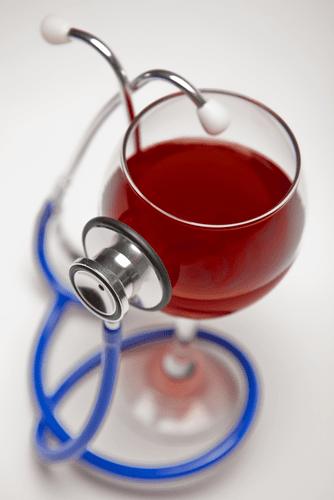Cravings vary in duration and intensity, and they are typically triggered by people, places, paraphernalia, and passing thoughts in some way related to previous drug use. But cravings don’t last forever, and they tend to lessen http://fotofact.net/youth/festival-metal-heads-mission-xiv-mhm-2013-fotoreportazh.html/comment-page-1 in intensity over time. For many of those who are addicted, enduring even that action is unimaginable. What must follow is the process of behavior change, through which the brain gradually rewires and renews itself.
Drugs & Supplements
If PAWS is severe or if you’re experiencing prolonged symptoms, a medical professional can help you work through them and remain in recovery without relapse. The symptoms involved in PAWS can be a barrier to recovery http://glavnoe.kharkov.ua/chto-sdelat-kogda-vash-smartfon-ne-zaryazhaetsya-hotya-dolgov-za-svet-net if you’re not careful. In addition to being able to recognize them, it’s important to know when to seek help. John C. Umhau, MD, MPH, CPE is board-certified in addiction medicine and preventative medicine.
Recovery Month Toolkit
Receiving such support is not understood as a defeat, and each person’s resources and vulnerabilities should be recognized and acknowledged. All the informants received some degree of therapy and support from social services or specialised healthcare facilities during the years after inpatient SUD treatment in Tyrili. Three received opioid maintenance therapy (OMT) and were in contact with a GP or therapist. http://www.redov.ru/jazykoznanie/angliiskii_jazyk_s_ye_r_berrouzom_princessa_marsa/p11.php Eight had been in treatment for trauma, anxiety, depression, psychosis or insomnia, and three had or were waiting for treatment for ADHD. Also, four informants mentioned participation in activities and support groups run by NGOs, as described above. Five informants had received inpatient treatment for substance use and mental health problems or detox several times since they left Tyrili.
Virtual Approaches: How Telehealth Is Used in SUD Treatment
Exercise, listening to music, getting sufficient rest—all can have a role in taking the focus off cravings. Studies show that craving has a distinct timetable—there is a rise and fall of craving. In the absence of triggers, or cues, cravings are on a pathway to extinction soon after quitting.
- To address this gap, researchers used data about people aged 18 to 64 participating in the 2010 to 2019 National Surveys on Drug Use and Health (NSDUH) to determine the number of children younger than 18 years living with a parent 18 to 64 years old with past-year drug use.
- According to the National Institute on Drug Abuse, an estimated 40 to 60 percent of people trying to quit use of drugs, and 50 to 90 percent of those trying to quit alcohol, experience at least one slip up in their first four years of recovery.
- Experts believe group therapy is superior to individual therapy for people recovering from prescription drug abuse.
- A person in recovery for drug addiction looks out from a substance abuse treatment center in Westborough, Mass.
- In addition, learning relaxation techniques can help those in recovery by reducing the tension that is often an immediate trigger of relapse, become comfortable with uncomfortable feelings, and release negative feelings that can trigger relapse.
Evolving Service Landscape and Workforce
Relapse is common and experts see it as an opportunity for learning about and overcoming impediments to change. Insurers routinely require patients with severe substance use disorders (SUD) to “fail first” at outpatient addiction treatment centers that are better suited for more moderate cases before they’ll pay for an inpatient stay that’s been recommended by a licensed health care professional. For many people with a substance use disorder, it’s simply a matter of never having learned the appropriate way to manage anger. Talk to your therapist, other healthcare provider, or sponsor about how to deal with your anger in ways that won’t cause you to harm yourself or others or turn to alcohol or drugs.

Warning Signs of Potential Relapse

Each of the informants shared their experiences and reflections about vulnerability, resources and the need for professional and social support. All except one informant had experiences of using substances after they left inpatient treatment in Tyrili. They created meaning related to substance use by referring to struggles in everyday life and powerful patterns due to former substance use. During the four years after they left inpatient treatment in Tyrili, they emphasised that feeling safe when it came to housing, the neighbourhood, violence or finances was essential. Close relationships with their families, partners, and friends were both demanding and helpful and elicited strong emotions. Participation in meaningful activities was necessary for the informants’ feelings of normality.
Selected Recovery Support and Harm Reduction Statistics
More recently, there has been a movement towards a fluid and adaptive approach to recovery that resembles a patchwork of non-linear layers and choices. One study with adolescents sought to determine the kind of continuing care that was best for those who had a poor response to outpatient treatment.16 Adolescents who did not achieve abstinence after 7 weeks of outpatient treatment were randomized to 10 weeks of individual CBT or A-CRA. Of these patients, 37% completed continuing care and 27% achieved abstinence. However, there were no differences in outcome between the two continuing care conditions.
He was also able to convince his insurance company to pay for longer-term treatment. Similarly, the roughly 95,000 deaths each year in the U.S. attributed to alcohol represent a fraction of high-risk drinkers. Researchers say this data — and this lived experience — contradicts a widespread misperception that substance-use disorder is a permanent affliction and often fatal. “Things that I thought I would never gain again, through the process of recovery I have them all,” she said. But in a pattern researchers say is common, Mable-Jones’ illness eventually eased. She found treatment that worked and has lived drug-free for more than 20 years.
She discovered fentanyl, disguised as Percocet, and many days she took dozens of the little blue pills. Engage people in shared decision-making conversations about accessing evidence-based treatment for their condition. The researchers found that among the estimated 321,566 American children who lost a parent to overdose from 2011 to 2021, the highest numbers of deaths were among parents aged 26 to 40 (175,355 children) and among non-Hispanic white parents (234,164). The next highest numbers were children with Hispanic parents (40,062) and children with non-Hispanic Black parents (35,743), who also experienced the highest rate of loss and highest year-to-year rate increase, respectively. The racial and ethnic disparities seen here are consistent with overall increases in overdose deaths among non-Hispanic American Indian/Alaska Native and Black Americans in recent years, and highlight disproportionate impacts of the overdose crisis on minority communities. Amid the nation’s opioid crisis, the city of Seattle has announced the creation of a recovery center for people who have been revived after an overdose.